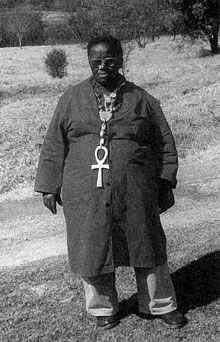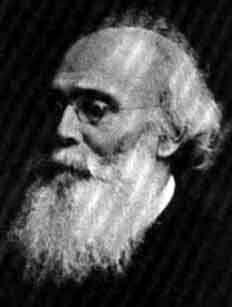Witchcraft is the use of alleged supernatural powers of magic. A witch is a practitioner of witchcraft. Traditionally, "witchcraft" means the use of magic or supernatural powers to inflict harm or misfortune on others, and this remains the most common and widespread meaning. According to Encyclopedia Britannica, "Witchcraft thus defined exists more in the imagination", but it "has constituted for many cultures a viable explanation of evil in the world". The belief in witchcraft has been found throughout history in a great number of societies worldwide. Most of these societies have used protective magic or counter-magic against witchcraft, and have shunned, banished, imprisoned, physically punished or killed alleged witches. Anthropologists use the term "witchcraft" for similar beliefs about harmful occult practices in different cultures, and these societies often use the term when speaking in English.

Zulu people are a native people of Southern Africa of the Nguni. The Zulu people are the largest ethnic group and nation in South Africa, with an estimated 14.39 million people, in total of which 13.78 million people live in South Africa, mainly in the province of KwaZulu-Natal.

Zulu, or IsiZulu as an endonym, is a Southern Bantu language of the Nguni branch spoken and indigenous to Southern Africa. It is the language of the Zulu people, with about 13.56 million native speakers, who primarily inhabit the province of KwaZulu-Natal in South Africa. Zulu is the most widely spoken home language in South Africa, and it is understood by over 50% of its population. It became one of South Africa's 12 official languages in 1994.
Zulu traditional religion consists of the beliefs and spiritual practices of the Zulu people of southern Africa. It contains numerous deities commonly associated with animals or general classes of natural phenomena. Unkulunkulu is known to be the Supreme Creator.

Traditional healers of Southern Africa are practitioners of traditional African medicine in Southern Africa. They fulfil different social and political roles in the community like divination, healing physical, emotional, and spiritual illnesses, directing birth or death rituals, finding lost cattle, protecting warriors, counteracting witchcraft and narrating the history, cosmology, and concepts of their tradition.

A witch doctor, or witchcraft doctor, is a kind of magical healer who treats ailments believed to be caused by witchcraft. The term is often misuderstood, and they could more accurately be called "anti-witch doctors". The term is now more commonly used to refer to healers, particularly in regions which use traditional healing rather than contemporary medicine.
Witch smellers were important and powerful people, almost always women, amongst the Zulu and other Bantu-speaking peoples of Southern Africa, responsible for rooting out alleged evil witches in the area, and sometimes responsible for considerable bloodshed themselves. In present-day South Africa, their role has waned and their activities are illegal according to the Witchcraft Suppression Act, 1957.
Unkulunkulu (/uɲɠulun'ɠulu/), often formatted as uNkulunkulu, is a mythical ancestor, mythical predecessor group, or Supreme Creator in the language of the Zulu, Ndebele and Swati people. Originally a "first ancestor" figure, Unkulunkulu morphed into a creator god figure with the spread of Christianity.

Vusamazulu Credo Mutwa was a Zulu sangoma from South Africa. He was known as an author of books that draw upon African mythology, traditional Zulu folklore, extraterrestrial encounters and his own personal encounters. His last work was a graphic novel called the Tree of Life Trilogy based on his writings of his most famous book, Indaba my Children. In 2018 he was honoured with an USIBA award presented by the South African Department of Arts and Culture, for his work in indigenous wisdom.
UMvelinqangi is a Nguni word which translates to "the Most High" or "Divine Consciousness"; that is considered the source of all that has been, that is and all that ever will be.

Henry Callaway was a missionary for the Church of England and bishop of St John's, Kaffraria, in the Church of the Province of Southern Africa.

The beliefs and practices of African people are highly diverse, and include various ethnic religions. Generally, these traditions are oral rather than scriptural and are passed down from one generation to another through narratives, songs, and festivals. They include beliefs in spirits and higher and lower gods, sometimes including a supreme being, as well as the veneration of the dead, use of magic, and traditional African medicine. Most religions can be described as animistic with various polytheistic and pantheistic aspects. The role of humanity is generally seen as one of harmonizing nature with the supernatural.

Euphorbia cupularis, referred to by the common name dead-man's tree is a succulent tree or shrub of the spurge family, Euphorbiaceae. It is found in South Africa and Eswatini.
In June 2007 the Office of the Premier of the Mpumalanga province in South Africa leaked a draft Mpumalanga Witchcraft Suppression Bill of 2007.

A nganga is a spiritual healer, diviner, and ritual specialist in traditional Kongo religion. These experts also exist across the African diaspora in countries where Kongo and Mbundu people were transported during the Atlantic slave trade, such as Brazil, the southern United States, Haiti and Cuba.

Christianity is the predominant religion in the Democratic Republic of the Congo, with Catholicism and Protestantism being its main denominations.

Religion in Ivory Coast is diverse, with no particular religion representing the majority of the population. According to the 2021 census, Islam is professed by 42.5% of the total population, while adherents of Christianity represented 39.8% of the population. In addition, 12.6% of Ivorians reported to be non-religious and 2.2% claimed to follow Animism or traditional faiths. Between the 2014 and 2021 censuses, the share of Christians increased from 33.9 to 39.8 percent, while the share of Muslims declined from 42.9 to 42.5 percent of the total population.

Bantu religion is the system of beliefs and legends of the Bantu people of Africa. Although Bantu peoples account for several hundred different ethnic groups, there is a high degree of homogeneity in Bantu cultures and customs, just as in Bantu languages. Many Bantu cultures traditionally believed in a supreme god whose name is a variation of Nyambe/Nzambe.

Makhanda, also spelled Makana and also known as Nxele, was a Xhosa indigenous doctor. He served as a top advisor to Chief Ndlambe. During the Xhosa Wars, on 22 April 1819, he initiated an abortive assault on the town of Grahamstown, in what was then the Cape Colony.

African divination is divination practiced by cultures of Africa.














